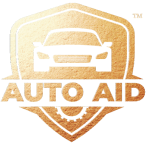Complete Car Inspection Checklist
Buying a car, whether brand new or pre-owned, is a big decision. To ensure that you’re investing in a safe and reliable vehicle, conducting a thorough inspection is absolutely essential. This comprehensive guide will walk you through a detailed checklist designed to cover every aspect of car inspection, empowering you to make an informed choice and avoid potential pitfalls along the way.
Why Car Inspection Is Crucial
Before we delve into the checklist, let’s understand why a car inspection matters so much:
Safety First: A detailed inspection helps identify any mechanical or safety issues, ensuring you don’t compromise on your safety or that of your passengers.
Financial Security: Uncovering hidden problems early on can save you from unexpected repair costs down the road, potentially saving you a lot of money.
Peace of Mind: Knowing the true condition of the vehicle you’re interested in gives you confidence in your purchase decision, allowing you to enjoy your new ride without worries.
Vehicle Inspection Checklist: Step-by-Step Walkthrough
1. Exterior Car Inspection
Start by closely examining the exterior of the car:
- Body Condition: Look for dents, scratches, or signs of rust, especially around the wheel wells and under the doors.
- Paint: Check for consistent color and texture across all panels; variations may indicate previous repairs.
- Tires: Inspect tire tread depth using a tread depth gauge or a coin; uneven wear can be a sign of alignment issues.
- Lights: Test headlights, brake lights, turn signals, and hazards to ensure they all work properly.
- Glass: Inspect all windows and mirrors for cracks, chips, or scratches.
2. Interior Car Inspection
Move inside the car and assess the interior thoroughly:
- Seats and Upholstery: Check for wear, tears, or stains on the seats and upholstery.
- Dashboard and Controls: Test all dashboard functions, including air conditioning, radio, and navigation systems.
- Odor: Take note of any strange smells, which could indicate mold, mildew, or other underlying issues.
- Odometer: Ensure that the mileage displayed matches the vehicle’s age and condition.
3. Under the Hood
Pop the hood and inspect the engine bay:
- Fluid Levels: Check oil, coolant, brake fluid, and windshield washer fluid levels; low levels could indicate leaks or neglect.
- Belts and Hoses: Look for signs of wear or cracking; damaged belts and hoses should be replaced.
- Battery: Inspect the battery terminals for corrosion and ensure the battery is secure.
- Leaks: Check for any signs of leaks (oil, coolant, or other fluids) under the engine.
4. Mechanical Inspection
Take the car for a test drive to evaluate its performance:
- Engine: Listen for unusual noises such as knocking, ticking, or squealing.
- Transmission: Ensure smooth shifting and responsiveness; delays or rough shifts can be red flags.
- Brakes: Test brake responsiveness and effectiveness; grinding noises or spongy pedals may indicate brake issues.
- Suspension: Drive over bumps to check for excessive bouncing or unusual noises.
5. Documentation Review
Finally, review the essential documents:
- Service Records: Examine maintenance records to ensure the car has been serviced regularly.
- Ownership Documents: Verify registration and title status to confirm ownership.
- Vehicle History Report: Obtain a report to check for any reported accidents, repairs, or outstanding liens.
Things to Check Before Buying a Second-Hand Car
If you’re considering a used car, pay extra attention to these critical factors:
- Vehicle Identification Number (VIN): Verify that the VIN matches the documents and hasn’t been tampered with.
- Previous Accidents: Look for signs of repaired damage, such as paint overspray or mismatched panels.
- Lien Check: Confirm there are no outstanding loans or liens on the vehicle.
Utilizing Professional Car Inspection Services
For added assurance, consider hiring a professional for a comprehensive inspection:
- Pre-Purchase Inspection: A certified mechanic can provide a detailed report on the car’s condition, highlighting any potential issues.
- Diagnostic Scans: Advanced diagnostic tools can uncover hidden electronic problems that may not be obvious during a visual inspection.
Conclusion: Drive Home with Confidence
A meticulous car inspection is your best defense against unforeseen problems when purchasing a vehicle. By following this detailed checklist and seeking professional assistance when needed, you can make a smart and informed decision that you’ll feel good about for years to come. Remember, buying a car is more than just a transaction—it’s an investment in your safety and peace of mind.
Whether you’re buying from a dealership or a private seller, taking the time to conduct a thorough inspection demonstrates your commitment to making a wise investment. Share this checklist with friends and family who are also in the market for a car, and empower them to make a confident choice too.
For more information or to schedule a professional Car Inspection Service, feel free to reach out to Auto Aid. Your journey towards owning a reliable and safe vehicle starts here!
Download AutoAid App now!

